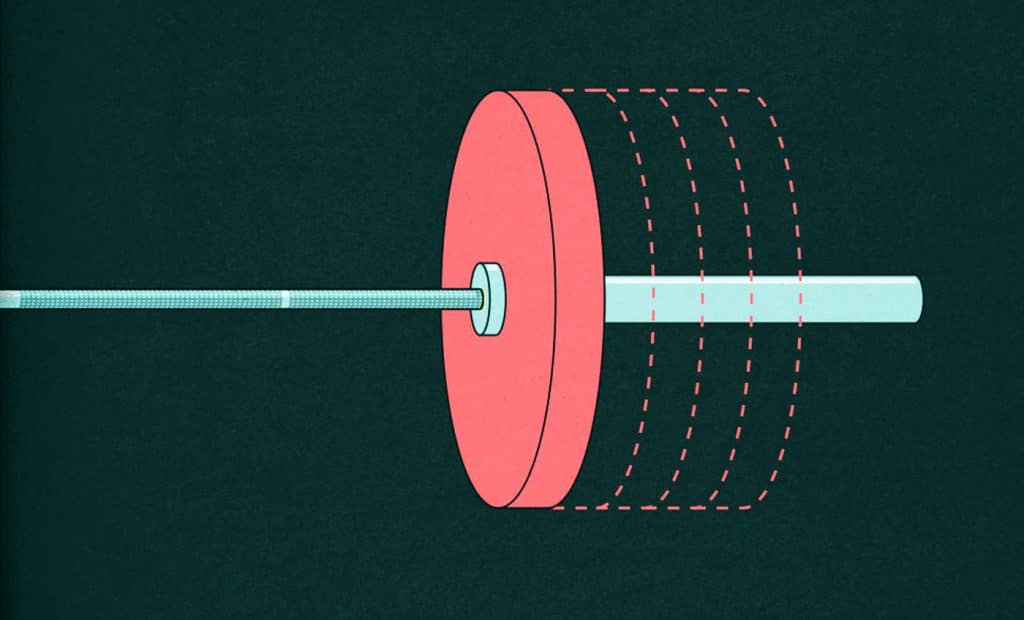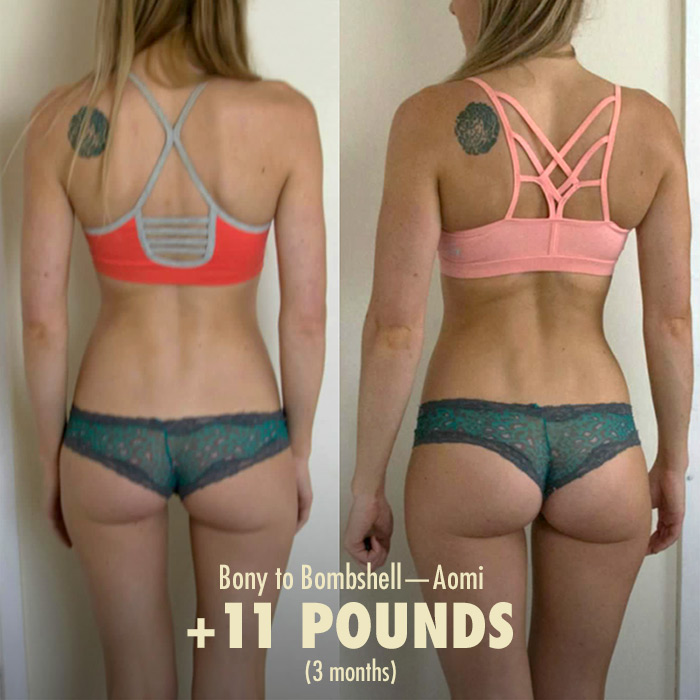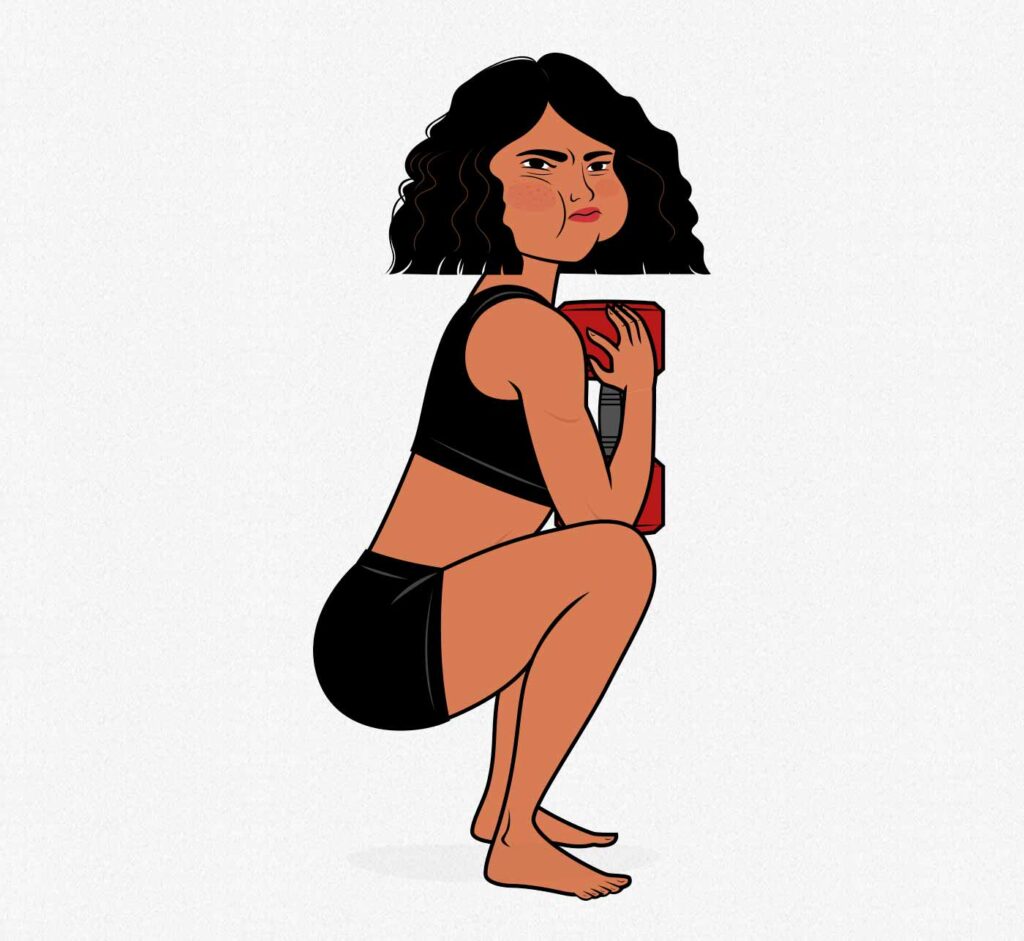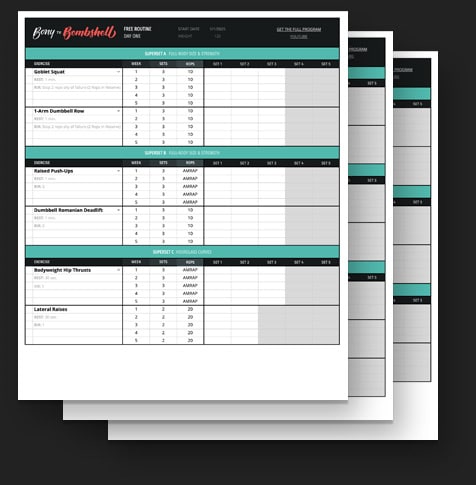
How Much Weight Should a Female Beginner Lift?
When getting into lifting weights, it can be confusing as to how much weight you should lift. There’s no definitive answer because every woman is different. But there are some good tips to figure out what the right weight is for each exercise that matches your own current levels of strength, athleticism, and recovery. Let’s take a closer look.
How Much Weight Should You Lift?
Safety Comes First
The good news is that lifting weights is one of the lowest risks of injuries when it comes to sports. You’re much more likely to hurt yourself playing soccer. You’re even more likely to hurt yourself gardening. But that doesn’t mean that you can’t get injured.
The most common injury is dropping a weight on your toe or pinching your fingers under a weight. So you can be extra prudent when handling and returning weights, and that will make things even more safe.
But women can still hurt themselves by using improper form. A big part of improving your form is patience. You need to give time to allow your body to try its best, go to sleep, and then rewire. It’s a lot like learning how to dance or play the piano. You can’t do it one day, you struggle, then you go to sleep, and poof, you can suddenly do it.
But sometimes people will use too heavy of weights, and that can lead to form breakdown. So in terms of safety, it is always better to choose obviously-too-light of weights, and work your way up to find your real weight, rather than choosing too heavy of weights, struggling with form, and then lightening it. So put another way, err on the side of lifting too light. If it’s way too light, count it as a warm-up set, and try again.
The second thing you can do as a beginner, in terms of safety, is stay well away from 1-rep maxes where you are lifting so heavy you can only lift the weight once or twice. Stay in the 5-12 rep range, and that will also help with reducing injury.

How To Discover The Right Weight To Lift
When you look at a workout sheet, it will list the exercise, the number of sets, and the goal reps.
Your goal is to hit the rep number listed while:
- Keeping pristine form through the entire set.
- Challenging yourself and going close to the verge of failing—keeping only 1-2 reps in the tank.
Discomfort, Reps In The Tank & Failure
It’s common for beginners to leave more reps in the tank than they think they are. They stop when the lift feels hard, and it can hurt. But muscle burning and muscle pain is not failure—that’s just discomfort.
But beginners aren’t used to that discomfort, so they stop at ten reps, not realizing they could have done fifteen or even twenty reps. The only way to learn how close to failure you are is to get familiar with what true failure feels like. Smaller isolation lifts present a great opportunity to do that, like the glute bridge, leg extension, etc.
You don’t want to go to failure each and every set. That will make it too difficult to recover from. You want to keep 1-2 reps in the tank for all of your sets. Not only will you see better growth, but you’ll get less sore and lower your chances of injuries.
So how do you keep 1-2 reps in the tank?
Let’s say the sheet says to do 10 reps of Goblet Squat. You want all 10 reps to be in pristine, textbook form.
But if you pick too light of a weight, let’s say a 20-pound dumbbell, you might be able to do 18 reps of Goblet Squats with perfect form. That is leaving “8” reps in the tank since you did 8 reps more than the workout sheet had asked for. That is too light of a weight and isn’t challenging your body hard enough to build muscle.
On the flip side, let’s say you picked a 40-pound dumbbell. You had a hard time getting the weight up into the goblet position. You were falling too far forward on your toes, you couldn’t squat very deep, and you only could do 5 crummy reps before you failed and had to put the weight down. That weight is much too heavy. You couldn’t even get into the right position to activate the right muscles.
Now, perhaps you pick a 30-pound dumbbell, and you decide to experiment with going to technical failure. Technical failure is when you keep perfect form, but you keep going until you cannot do the movement anymore. You don’t want to do this all the time, but it might be helpful to try pushing yourself all the way until you can’t do any more reps. That way, you’ll know what it feels like to have 0 reps left in the tank.

Let’s say you kept going until you couldn’t, and you got 12 reps. That’s perfect. Next time, just do the set until 10 reps, as it said on the sheet, and that’s keeping 2 reps in the tank. Pay attention to how challenging that feels.
Progressive Overload & Adapting
Over time, your muscles will get bigger and stronger. Your brain will get better at activating your muscle coordination, and doing the exercise will feel easier and easier.
Your reps in the tank will be growing. Maybe in a month, that same 30-pound dumbbell feels light now. You’ve got too many reps in the tank again. At a certain point, the weight will be too light again to cause further muscle growth. And it’s time to increase the weight a little bit and start the process of growing muscle all over again.
Going back to the original example, after a few weeks of a solid workout, eating for muscle growth, and sleeping like a Bombshell—lifting 30 pounds for the Goblet Squat is not challenging and no longer causes new muscle growth. Doing your workouts with that 30-pound dumbbell will help you stay fit and maintain what you have, but if you want to continue to build those legs and glutes up, you will need to increase the weight. Now you need to grab a 35-pound dumbbell and start the process over again.
Choosing The Right Weight
Okay, so we’ve covered a lot. During your first week of training, it might take some trial and error to find the right weights to lift. It’s okay. Just make sure you make some time for it and expect this.
If a set feels too easy, call it a warm-up set. Grab a heavier weight. Do another set. And when the weight feels heavy enough, double-check. If the sheet says ten reps, and you get ten reps, keep going. Do as many reps as you can. If you get more than twelve reps, grab a heavier weight.
You’ll need to experiment with a lot more warm-up sets than you might expect until you find a weight that’s heavy enough to truly challenge you in the right rep range.
If you have a history of injury or if a certain movement pattern causes some aches to flair up, it’s okay to be more cautious with the lifts that worry you. For example, if you’ve got a history of low back pain, maybe that means staying a bit further away from failure on any deadlift-type exercises. That’s fine. But challenge yourself where you can, should you feel up for it.
As You Lift Heavier, Keep Pristine Form
As you continue to lift heavier and heavier, you must make sure that you’re lifting heavier because you’re getting stronger and gaining muscle—and not because you’re letting your form get sloppy. You must keep your form strict. It’s easy to trick yourself into believing that you’re getting stronger when really, you’re just letting your lower back do all the lifting. Keep your ego in check, give your time to get stronger, and you’ll get solid results. It is better to use a lighter weight and do the exercise properly.
Bombshell Recovery

Recovering from your lifting workouts is just as important as the workouts when it comes to results. You stimulate the muscles to grow. Then you feed the muscles with a muscle gain diet, then you give your body the time and sleep that it needs to rebuild.
In our experience, most female beginners have no problem pushing themselves hard with a workout. They’re not scared of hard work. But they often miss the foundations of a good diet to support muscle growth. So they spin their wheels. They stimulate the body to focus on building muscle, but the body has nothing to build that muscle with. We have multiple articles on improving your muscle-building diet, including our full Bony to Bombshell program:
Building A Good Workout For Female Beginners
Free Sample Female Lifting Workout
If you don’t have a workout, you might be interested in our full Bony to Bombshell program. A sample beginner’s workout for women could look like this:
- Dumbbell Goblet Squats: 2 sets of 10 repetitions.
- Raised Push-Ups: 2 sets of as many reps as you can.
- Dumbbell Romanian Deadlift: 2 sets of 10 repetitions.
- 1-Arm Dumbbell Row: 2 sets of 10 repetitions.
- Lateral Raises: 2 sets of 10 repetitions.
- Bonus Glute Work: 2 sets of glute bridges or hip thrusts
GET THE GOOGLE SPREADSHEET OF THE
FREE female BEGINNER’S FULL-BODY WORKOUT

Get the workout as a Google spreadsheet. You’ll be able to pick from exercise alternatives, fill out the sheet, and get our beginner’s warm-up.
Plus, we’ll make sure you’re on the Bony to Bombshell newsletter, and send you all of our best women's muscle-building content.
Use a Moderate Rep Range
For all of these lifts, you want to choose a weight that you can do 4–40 repetitions with. If you can’t do 4 repetitions, use a lighter weight or an easier variation. For example, if push-ups from the floor are too hard, then switch to doing push-ups from something like a couch edge to make it easier.
If you can do more than 30 repetitions, use a heavier weight or a more difficult variation (such as doing push-ups from the floor). That will guarantee that the workout is helping you gain muscle size and strength, not making endurance adaptations. But your strengths and the weights you have available will vary, so some flexibility will go a long way.
If you have access to adjustable dumbbells, choose a weight you can do 8-12 repetitions with.
Challenge Yourself But Stop Just Shy of Failure
Ideally, you’ll stop your set when you’re just about to fail. But as a beginner, it’s hard to know exactly how hard you’re pushing yourself. If you aren’t sure if you’re taking your sets close to failure, try doing more. Try pushing yourself all the way until your muscles give out. That way, you’ll know what it feels like. Next time, stop right before that point.
Start With Two Sets, Then Add More
Start with just a couple of sets, then add more sets as you get stronger. We recommend doing two sets of each exercise in the first week. Practice your form, find the right weights, and take your time.
Next week, if you aren’t too sore at the start of each workout, try adding a set to each exercise. If that goes well and you feel ready for more, add another set next week. You can do around 3–6 sets per exercise. Most people will do best with 3–4 sets (including us). If you ever start to feel worn down, or if you’re coming back after a long break, start the cycle over again, going back to just two sets per exercise.
How Many Days A Week Should I Workout To Build Muscle As A Female?
As a woman, you’ll want to do three full-body workouts per week for optimal muscle gain. Each workout will stimulate muscle growth for the next 2–3 days. After those 2–3 days, your muscles will be (mostly) repaired, and you should be ready for another workout. More importantly, you should be stronger. You should be able to lift more weight or eke out more repetitions than last time.
Because each workout stimulates a couple of days of muscle growth, training every second or third day works very well. Here’s a good default schedule, but feel free to adjust it:
- Monday: workout #1
- Tuesday: rest
- Wednesday: workout #2 (even if sore)
- Thursday: rest
- Friday: workout #3 (even if sore)
- Saturday: rest
- Sunday: rest (and full recovery)
Rest 1–2 Minutes Between Sets
How long you rest between sets isn’t very important. Whether you rest for 2 or 10 minutes, you’ll still stimulate a similar amount of muscle growth. The important thing is that you rest long enough to catch your breath, ensuring that your cardiovascular system doesn’t limit the performance of your muscles.
We want to challenge your muscles, not just your heart (though your heart will get a good workout, too!). The main reason to rest for just a couple of minutes is to keep your workouts short and dense. But if you need more rest or get interrupted partway through your workout, no problem. Just pick up where you left off.
If you want to blast through your workout even faster, you can do the lifts in a circuit/superset. Do a set of push-ups, rest a minute, then do a set of squats, rest a minute, then do your second set of push-ups, and then do your second set of squats. That way, you’re still giving your muscles plenty of time to recover between sets, but you’re doing another exercise during the rest period.
What Next?
If you liked this article, you’d love our muscle-building newsletter. We’ll keep you up to date on all the latest muscle-building information for women. Or, if you want us to walk you through the process of building muscle, including teaching you the lifts, giving you a full workout program, a complete diet guide, a recipe book, and online coaching, check out our Bony to Bombshell Program.



FREE women's Muscle Growth MINI-COURSE
Get our 5-part female bulking mini-course that covers everything you need to know about:
Here are some related articles